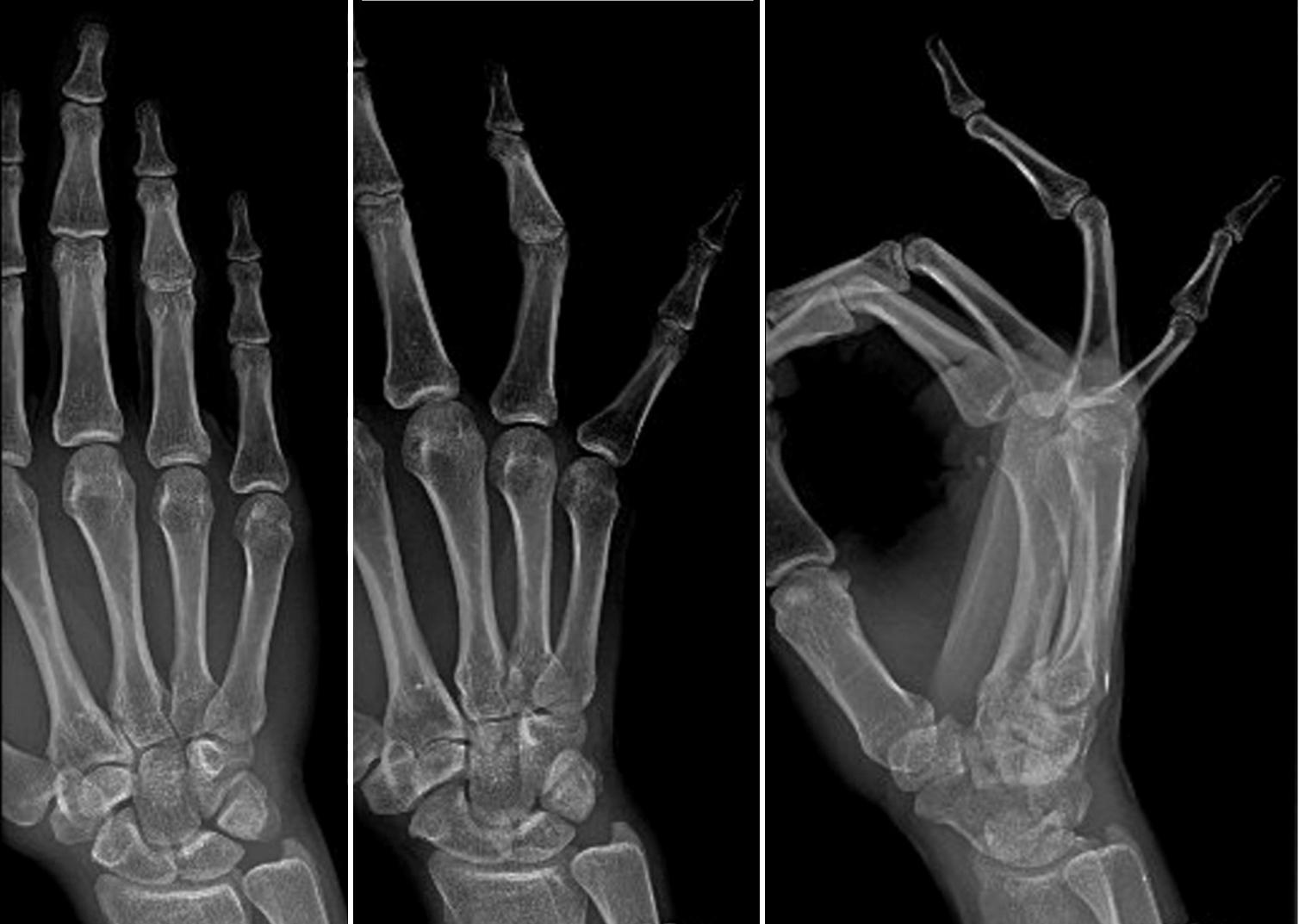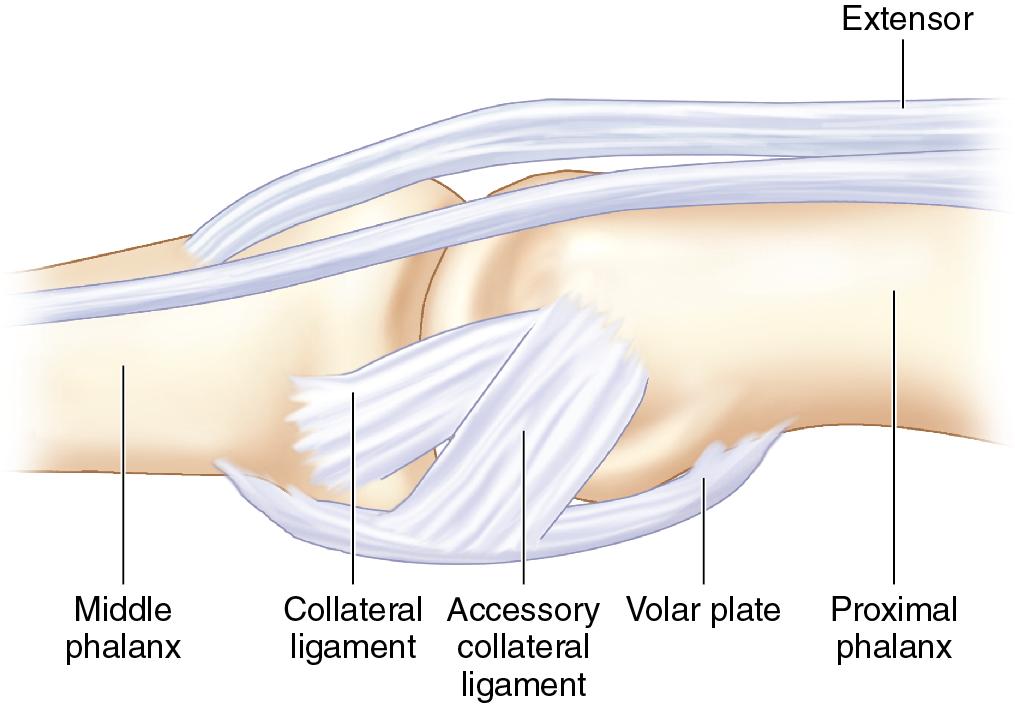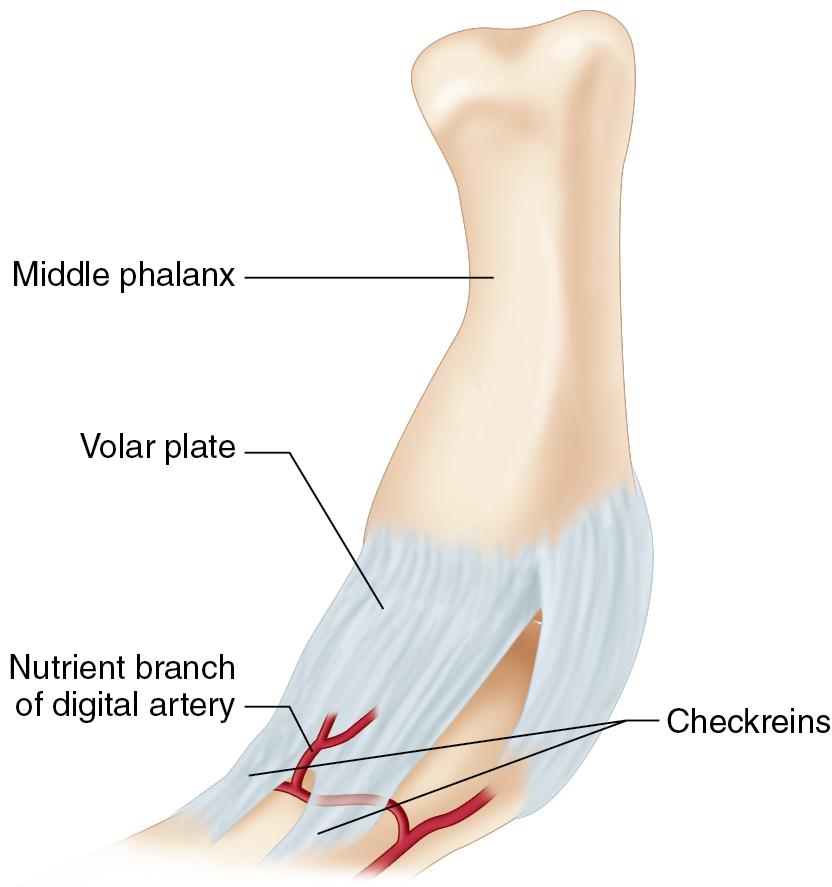Physical Address
304 North Cardinal St.
Dorchester Center, MA 02124
Proximal interphalangeal (PIP) joint capsulotomy is indicated for patients with decreased range of motion (ROM) and functional limitations who have failed nonoperative management (active joint mobilization, dynamic and/or static splinting, and passive stretching).
Patients must understand that recurrence is common and postoperative therapy is mandatory.
In rheumatoid arthritis, synovitis within the joint stretches the extensor mechanism and causes a boutonniere deformity.
In osteoarthritis and posttraumatic arthritis, edema causes expansion of the synovial spaces. A swollen metacarpophalangeal (MCP) joint assumes an extended posture, which increases the relative flexion force on the PIP joint. The collateral ligaments contract and limit motion over time.
The fingers are examined for swelling, scars, and deformity.
Passive and active ROM at the PIP joint is tested with the MCP flexed and extended. Increased PIP motion with MCP flexion may indicate intrinsic tightness. If passive motion exceeds active motion, then tendon adhesions may be present. If passive and active motion are equal and PIP motion is the same in all MCP positions, then the pathology is within the PIP joint.
The joint is tested for stability in all directions.
Standard, three-view radiographs are performed to evaluate the bony anatomy and assess for articular congruity ( Fig. 103.1 ).

Magnetic resonance imaging (MRI) and computed tomography (CT) are rarely needed but offer a more detailed assessment of the articular surface and bony anatomy in posttraumatic situations.
The PIP joint has a large arc of motion but is constrained by the anatomy of the articular surfaces and the surrounding soft tissue attachments.
The PIP joint is covered laterally by a superficial layer made of transverse and oblique fibers of the retinacular ligament of Landsmeer. The oblique retinacular ligament links the motion of the PIP and distal interphalangeal (DIP) joints. With PIP flexion, the ligament relaxes the DIP joint to allow flexion. During PIP extension, the ligament tightens to extend the DIP.
The collateral ligaments and accessory collateral ligaments are stout structures adjacent to the retinacular ligament and provide lateral joint stability ( Fig. 103.2 ).

Paired checkrein ligaments extend proximally from the volar plate and insert onto the proximal phalanx; their primary function is to limit extension. An anatomic landmark that delineates the checkrein ligaments is the transverse digital artery, which passes 3 mm proximal to the PIP joint ( Fig. 103.3 ).

Become a Clinical Tree membership for Full access and enjoy Unlimited articles
If you are a member. Log in here